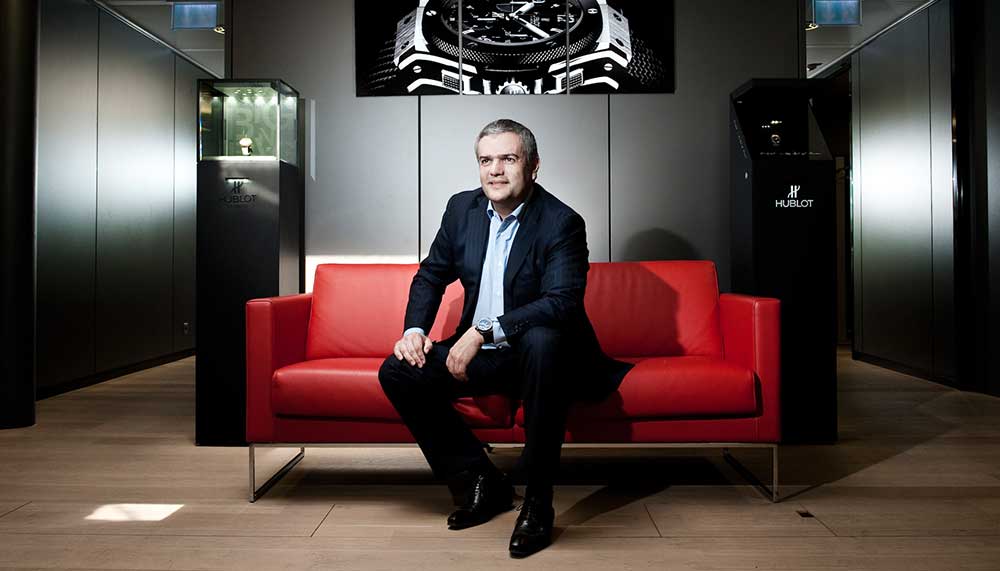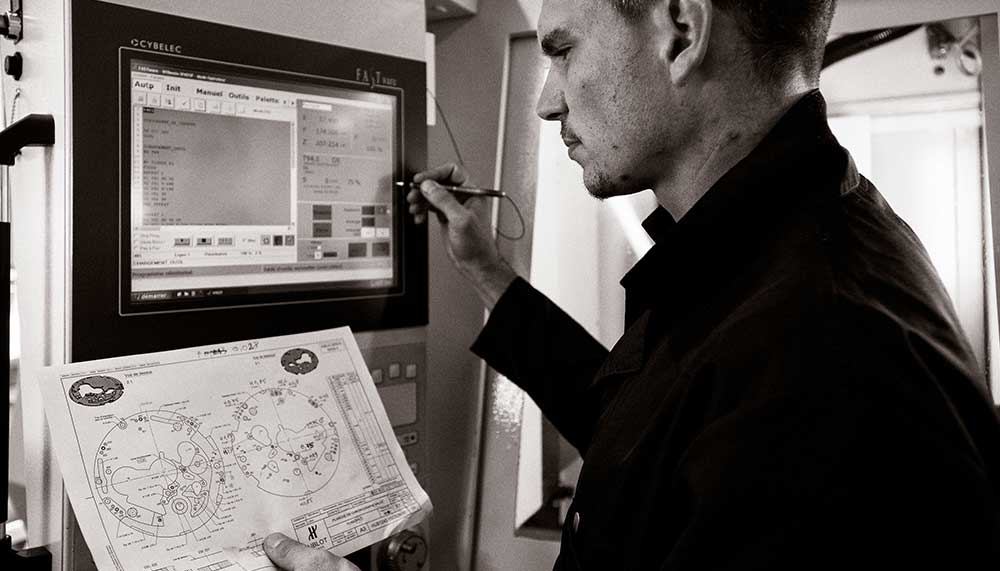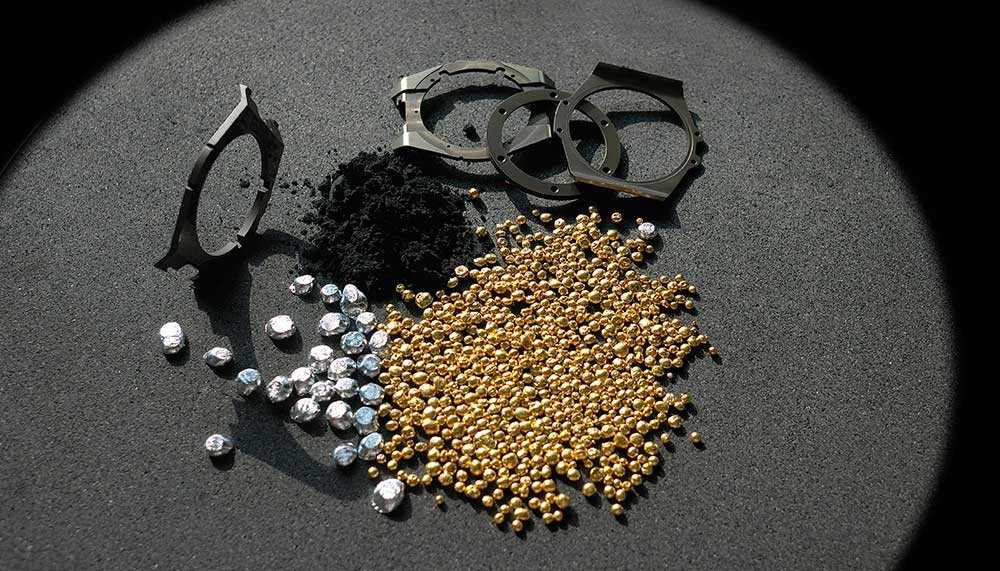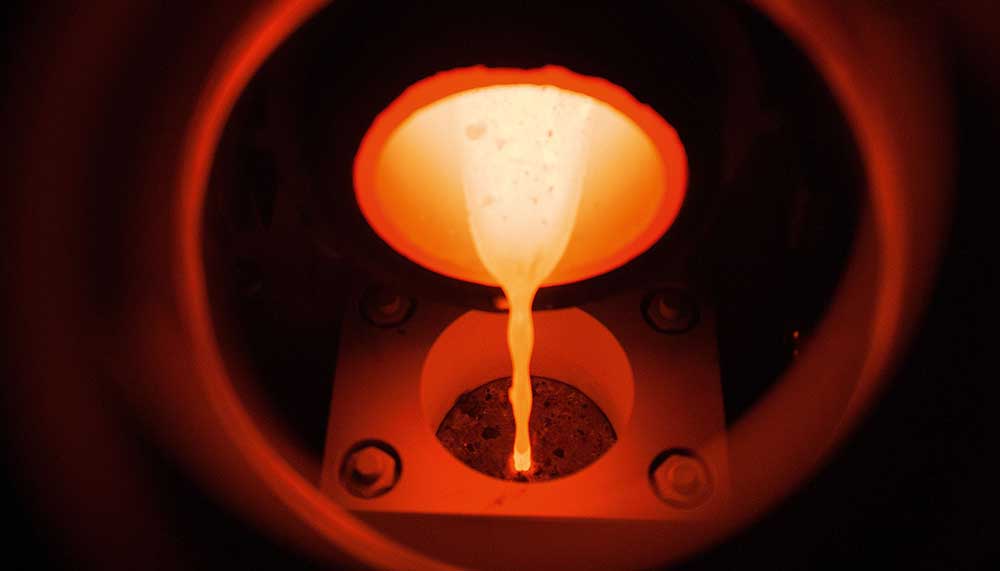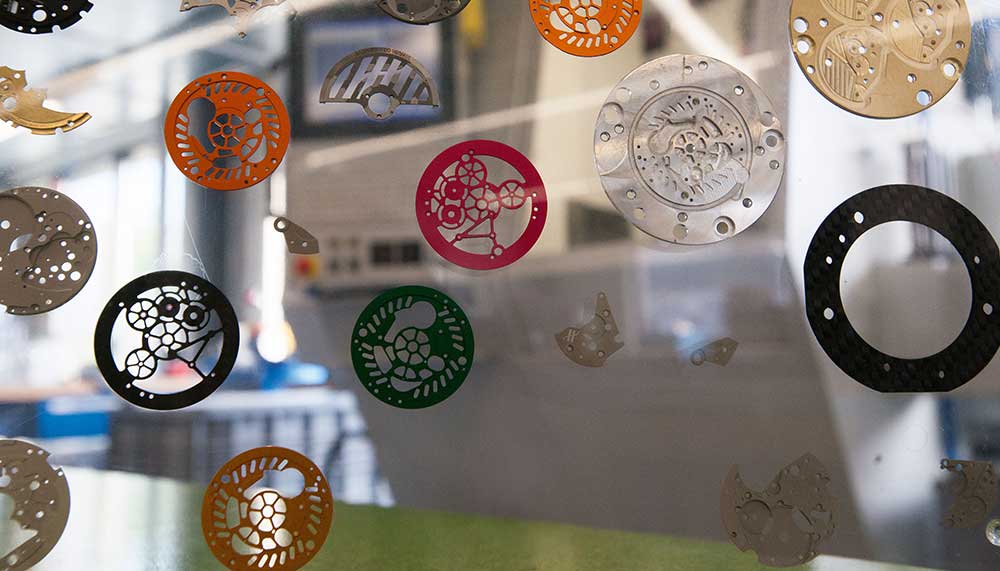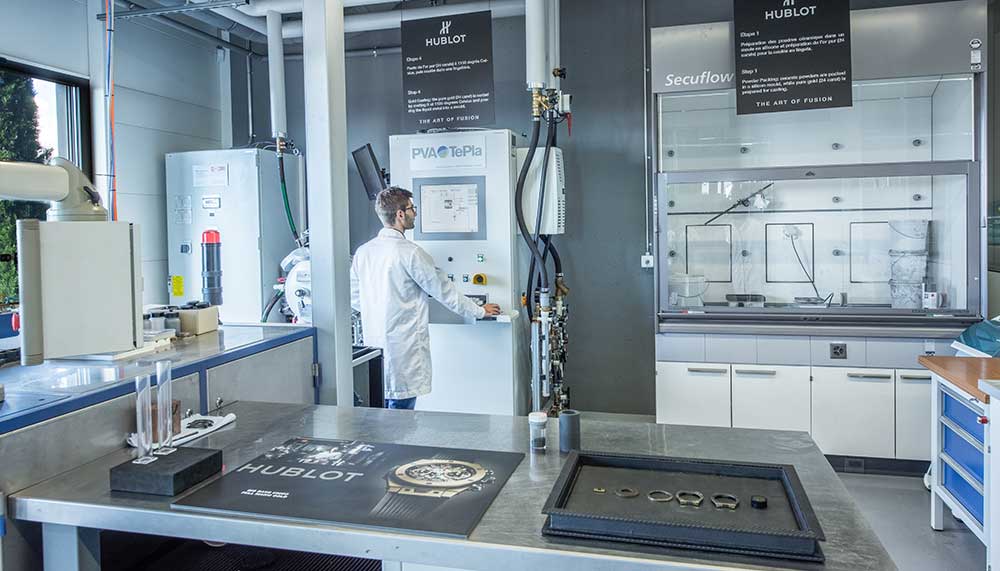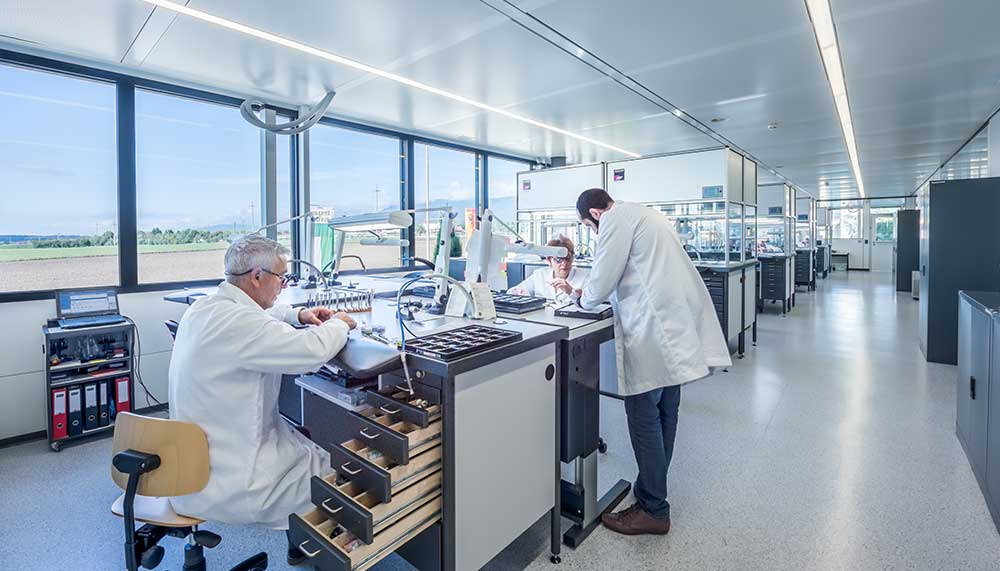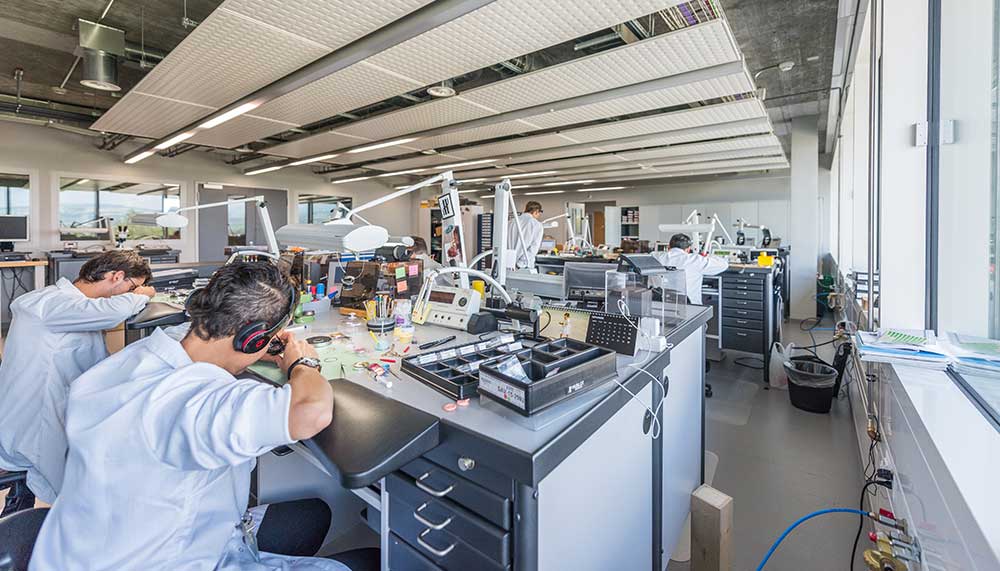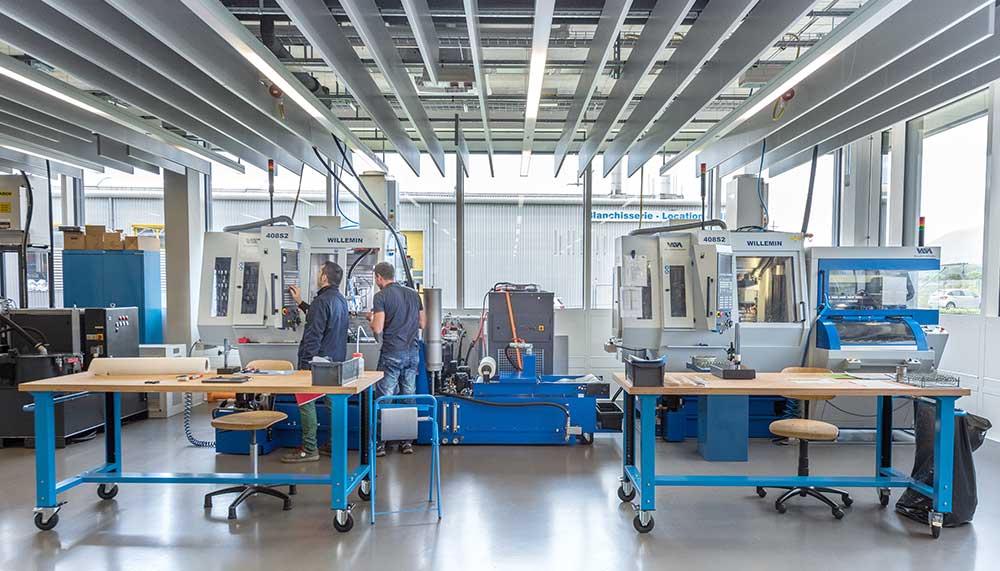Of machines and men
“Today, watchmaking is beyond merely producing equipment to measure time,” observes Ricardo Guadalupe, CEO of Hublot. “At our level, we sell a piece of art – something emotional and aspirational which our clients enjoy.” The present-day Hublot, not so long removed from its days as a ‘small and young manufacturer of quartz watches’ – in the words of Guadalupe – is now a juggernaut in watchmaking. Its omnipresence on the wrists of luminaries range from football legend Pele and Manchester United’s newly installed manager Jose Mourinho to the fastest man alive Usain Bolt, NBA’s Kobe Bryant and supermodel Bar Rafaeli.
The Hublot name, which means ‘porthole’, was chosen by its Italian founder Carlo Crocco who was an avid yachtsman. Immediately after, the much vaunted ‘Art of Fusion’ was born, the direct result of Crocco merging precious materials with a rubber strap, primarily for nautical reasons. Ever since then, the Art of Fusion has become the bedrock of Hublot’s many inventions, from its 18k scratch proof Magic Gold alloy to a varied array of materials utilised in timepiece construction; denim, linen, silken embroidery and freeze-dried blades of grass from Old Trafford.
In the bucolic town of Nyon, situated along the banks of Lake Geneva, the Hublot manufacture may be reached by country roads which run through vineyards and vast fields. The original building, which began operations in 2009, was recently augmented with a second plant – inaugurated in September last year. The two facilities, staffed by over 540 employees, are separated by a railway track and joined by a sleekly black pedestrian bridge.
Inside, a contemporary spirit of design pervades, as evidenced by glass and steel construction, as well as state-of-the-art charging terminals – used for electric cars and scooters. In one corner of the factory, a crèche looks after the employees’ young ones – a directive by Hublot’s Chairman Jean-Claude Biver who wanted employees to have the convenience of bringing their children to work.
The original building hosts the research and development teams who undertake the discovery of new materials and highly complicated movements. Hublot’s stratospheric 12-year rise owes plenty of its success to this grouping of skilled watchmakers. Here in Nyon, each of the specialists operate under a veil of secrecy ensuring that new projects are confidential until its intended release. An assembly of up to 16 skilled watchmakers then work on the physical construction of these unique talking pieces. It’s not uncommon for them to spend up to seven weeks creating something as intricate as a minute repeater which consists of approximately 40 different springs, amidst hundreds of other components.
For those looking in, the beauty in an all new manufacture is, clearly, the planned use of floor space. Straight manufacturing lines and a clear demarcation of processes has enabled Hublot has forecast an assembly of nearly 12,000 UNICO movements annually. Through the help of modern computer numerical control machines, these robotic aides carry up to 28 operations in cutting, shaping and drilling at measurements as fine as 10 microns (Hublot consciously avoids stamping to cut components, thus preventing deformation). In an extra bid to future proof its movements, the UNICO’s brass plates are electroplated and surface treated to prevent oxidisation.
Once these base components are machined, the human hand takes over; a very small quantity of glue is applied on the silicium escape wheel to attach it to the axle, while a manual press is integrates stones into tourbillon movements. The latter relies greatly on the technician’s instinct and a trained muscle memory for applying the right pressure. An electronic checker is the computerised safety net to ensure the perfect height of stone.
The same artisanal and human approach is needed on the stylised movements through satin, sunray, perlage and circular-grained finishes. On a piece such as the Classic Fusion Skull Titanium Full Pave, a total of 1,168 are set into the timepiece, requiring over a week of painstaking craft from one of only two diamond setters employed at the manufacture.
In some ways, the Hublot manufacture leverages on what Guadalupe refers to as the brand’s competitive advantage. “We have to try to be better (than our competitors),” he says. Its recent inauguration has enabled incorporation of advanced new tech such as ultrasonic, laser and diamond cutter. These implements have helped, particularly on tour de force projects such as milling the sapphire case of the new LaFerrari.
Within the same building, Hublot’s Magic Gold foundry merges 75 per cent of pure gold with 25 per cent of hardy boron carbide ceramic (also called black diamond). The latter’s application is largely directed towards bulletproof vests and tank armour. However, at 2,000 degrees Celsius, Hublot has fused this boron carbide with precious gold, resulting in its proprietary Magic Gold, for a case hardness of 1,000 Vickers, far and above that of high-grade steel at 700 Vickers.
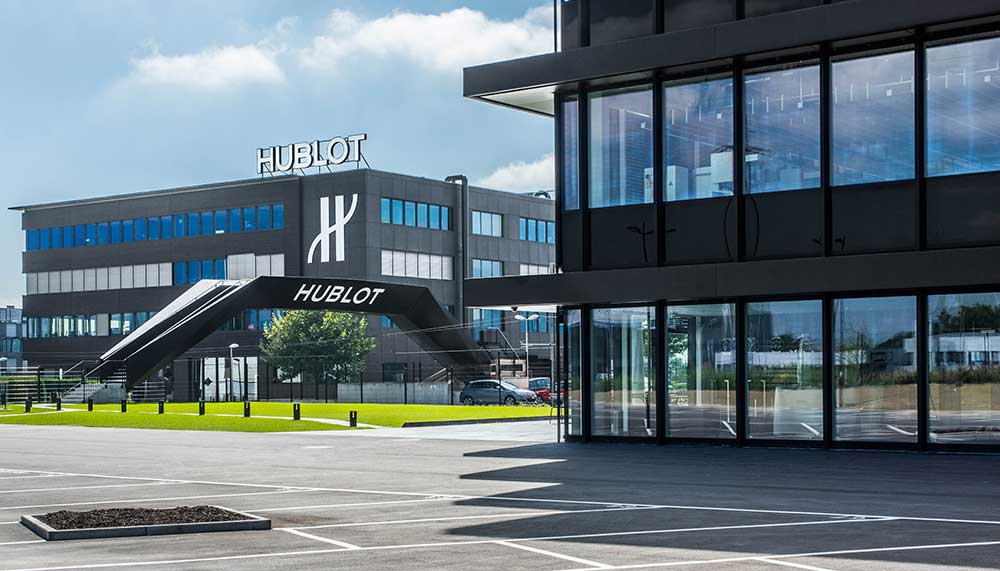 The last phase of checking occurs once movements are encased. Each timepiece is thus examined twice for consistency, once before and once after the movement is cased. The proof of this modern manufacturing techniques lies in a fairly low error rate of between only three and five percent of movements which require tweaks.
The last phase of checking occurs once movements are encased. Each timepiece is thus examined twice for consistency, once before and once after the movement is cased. The proof of this modern manufacturing techniques lies in a fairly low error rate of between only three and five percent of movements which require tweaks.
“As CEO of the brand, my function is to always encourage creativity,” Guadalupe says of Hublot’s strategy. External collaboration with scientific research institutes such as the Ecole Polytechnique Federale de Lausanne has yielded new ideas in materials and manufacturing techniques. Through the many exciting new timepiece debuts, Guadalupe is largely confident of continuing the work which he and Jean-Claude Biver had set out to accomplish. “For us to be a complete, integrated manufacture, we have to anticipate the evolution of future products.” This is also why plans for a third building are already drawn up. The rapid rise of Hublot is no mere happenstance. In its manufacture, one finds the minds of men devising timepieces which carry emotion and art. As Guadalupe muses: “Hublot is an artisan of eternity.”


